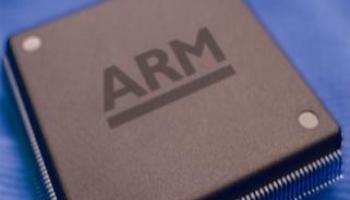ARM Taking Aim At Green Server Space

Chip designer ARM is looking to move into the low-end server space through virtualisation support
ARM, maker of chips that can be found in most mobile phone and other smaller devices, apparently is taking aim at the server space.
At the Hot Chips conference at Stanford University, in Stanford, Calif., an ARM engineer on 23 Aug. said the next version of the company’s Cortex A processor will support virtualisation technology, a feature that is particularly important for servers and data centres.
Dave Brash, ARM’s architecture program manager, said during his Hot Chips presentation the company is “very, very close to releasing that design,” according to several reports.
Hypervisor Products
Brash reportedly said a number of virtualisation technology vendors, including server virtualisation leader VMware, already are crating hypervisor products that will support ARM’s new chip design. There also are a number of vendors that make hypervisors for the mobile and embedded spaces that are creating products to support the chip design.
Also in the upcoming chip, code-named Eagle, ARM reportedly is including an extension that will allow for large physical address support, another important feature in server-based processors.
ARM licenses its designs to chip makers like Texas Instruments. The ARM-designed processors are known for their low power consumption, and are widely used in cell phones and embedded devices.
With the new design, ARM is eyeing the low-end server market, Brash said, adding that a move into this area would be a “natural progression of the ARM architecture.”
Such a move also means bringing ARM in direct competition with Intel and Advanced Micro Devices, makers of the x86-based processors that are the dominant technology in the server market. To a lesser extent, ARM would have to contend with RISC-based processors from the likes of Oracle. In addition, because most server software is written for x86 and RISC, software developers would have to bring their products to the ARM platform.
However, with power costs rising and the adoption of such technologies as virtualisation and cloud computing growing, businesses are increasingly demanding greater energy efficiency from their servers and the processors that power them.
Both Intel and AMD have aggressively reduced the power consumption of their processors while increasing the number of cores to improve overall performance. However, other processor and systems makers are seeing opportunity in this spiking demand for greater performance and energy efficiency.
Startup SeaMicro is using Intel’s Atom processors, initially created for the netbook space, to build highly efficient servers for cloud-computing and scale-out Internet workloads. SeaMicro in June unveiled its SM10000 server, which the company said can scale to 512 Atom chips.
100 Core Chip
And Tilera, which has 36- and 64-core processors on the market, has plans to unveil a chip with 100 cores in 2011 and another with 200 cores in 2013. Tilera also is teaming up with Quanta Computer to build a server that can put 512 computing cores into a single rack.
Another startup, Smooth-Stone, is looking to build low-power server chips using an ARM design. Also, Lyric Semiconductor is working to develop an alternative to x86 processors with a probability-processing chip called the GP5, which will roll out in 2013 and, according to company officials, will be significantly more efficient than processors from Intel or AMD.
ARM’s move also comes at a time when Intel is looking for ways to muscle into ARM’s territory. Intel officials say they are eager to expand the company’s reach beyond its traditional core of servers and PCs by moving into handheld devices and the embedded market, and are looking to the Atom platform as a way in.